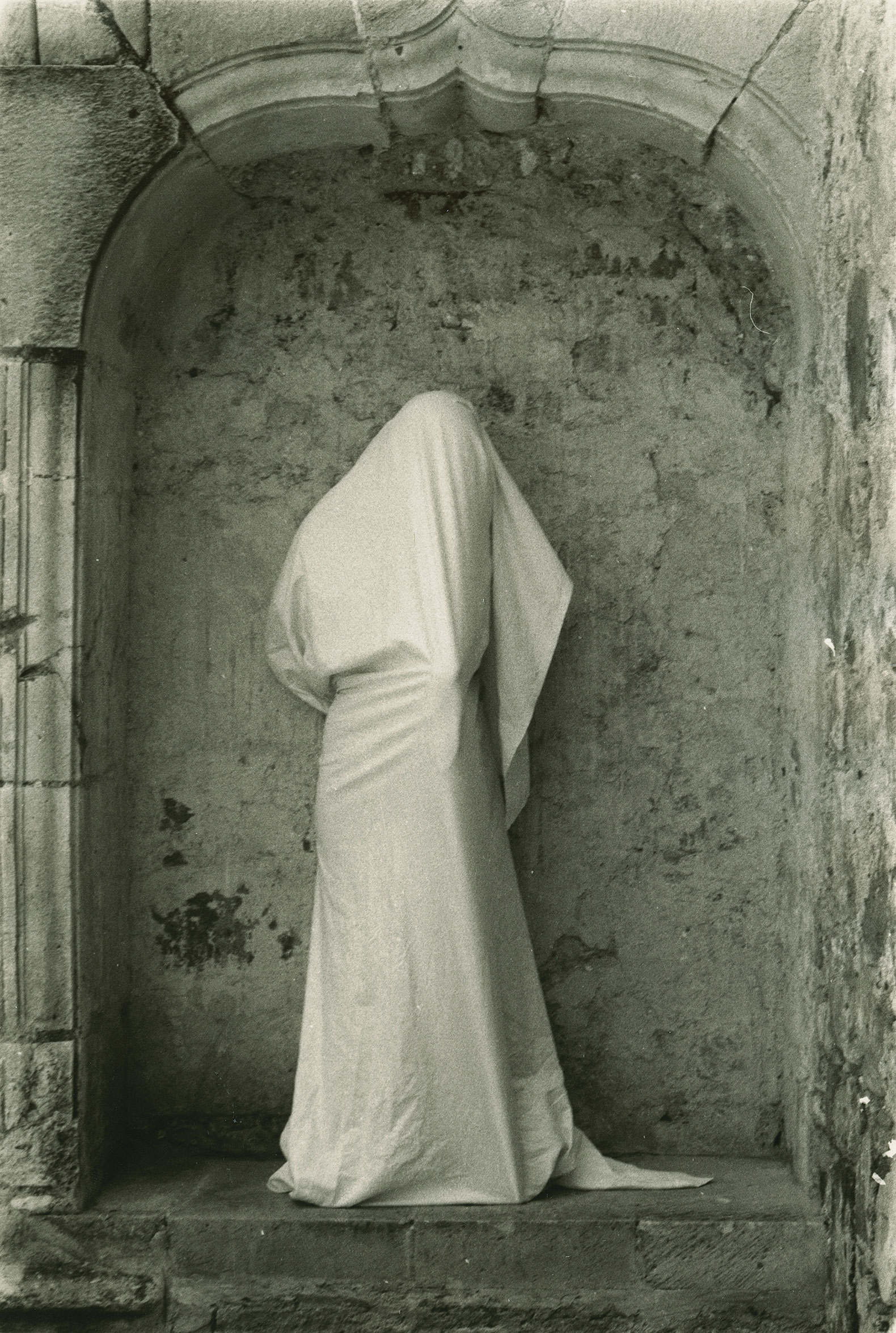The exhibition focuses especially on revealing his relationship with the visible and the invisible, his way of making the unspeakable intelligible through the lines of the body, and his relationship with nature. It is not intended to be a retrospective exhibition, but rather to celebrate the relevance of such political and vibrant contemporary work. It is organized through eight sections, linking iconic works by the artist with other unpublished pieces: her delicate drawings on amate paper, a selection of paintings tackled between 1969 and 1971, the recreation of an installation made in 1978 and a set of discovered photographs in 2022.
Ana Mendieta was a Cuban artist who developed multidisciplinary work, in areas such as video, sculpture and photography. Among her most relevant themes are corporeality, stereotypes and the channeling of all this through nature.
She was born in Havana in 1948, although at the age of 12 he went into exile with her sister to the United States within the framework of Operation Peter Pan (a maneuver coordinated by the US Government, the Catholic Church and the Cuban exiles, to carry out more than 14,000 children from Cuba to the North American country).

Untitled (Self-portrait). Ana Mendieta.
Mendieta's academic and artistic training began and developed at the University of Iowa, beginning her work within the framework of expressionism, although her way of working and her interests soon changed.
Mendieta entered the Intermedia Program and Center for New Performing Arts, where she began to practice performance and body art, for which she will use her body as a medium and channel to make art. She was one of the artists who most promoted these modalities along with land art, art in the land, or nature.
In the 1970s, the feminist movements that emerged during the first revolutions of the 1960s began to strengthen. This had a great influence on the work of the artist, who was highly aware of and committed to the social problems around her, especially, those related to marginality and otherness.
According to the researcher Alejandro del Valle-Cordero, Mendieta's artistic project was unique, permeated by a need to “make art in the manner of the primitives”. And it is that the art of the Cuban did not pretend to develop a mimetic capacity of the images, but to produce these in a more real way, assuming a transforming function with elements that the artist herself defined as "magical" and "spiritual".

Untitled (Nicho de cuilapán). Photograph by Ana Mendieta.
In this sense, Mendieta considered that the omnipresence of the feminine and its connection with nature was something that had been reflected in the artistic practices of indigenous and European cultures of the past.
Thus, she expresses her desire to work from the margin and the periphery, which contributes to the creation of an identity that belonged to her and included two very different cultures at that time: the American and the Cuban.
The corporality of her work reflects the rejection and suffering caused by racism, politics, violence, but also an exile. The latter was a key point in her personal life that will be projected in her work, since it was uprooted from her roots, from her parents, to take her to a country with a marked racist character at that time.
Some of her most significant works were made in 1972 when she carried out the Glass on body series. It is about a performance where he presses different parts of his body against a glass, with this she intended to symbolize the ideological system that generates a kind of corporal dominance. This, also, contributes to the demystification of the female body whose sole purpose is sensuality and eroticism.

Untitled (Silueta series). Photograph by Ana Mendieta.
In the same year, she developed a photographic series called Transplant of facial hair, a product of the thesis carried out for the painting master she studied. In it, you can see how Mendieta records the process of cutting a friend's mustache and beard to place them on her face.
A year later, in 1973, she began with the Silhouette series focused on recording the traces of bodies in different landscapes, often making her corporality disappear and showing an inseparable character between body and nature.
She tried to reaffirm her ties with the earth corresponding to:
Ana Mendieta was a Cuban artist who developed multidisciplinary work, in areas such as video, sculpture and photography. Among her most relevant themes are corporeality, stereotypes and the channeling of all this through nature.
She was born in Havana in 1948, although at the age of 12 he went into exile with her sister to the United States within the framework of Operation Peter Pan (a maneuver coordinated by the US Government, the Catholic Church and the Cuban exiles, to carry out more than 14,000 children from Cuba to the North American country).

Untitled (Self-portrait). Ana Mendieta.
Mendieta's academic and artistic training began and developed at the University of Iowa, beginning her work within the framework of expressionism, although her way of working and her interests soon changed.
Mendieta entered the Intermedia Program and Center for New Performing Arts, where she began to practice performance and body art, for which she will use her body as a medium and channel to make art. She was one of the artists who most promoted these modalities along with land art, art in the land, or nature.
In the 1970s, the feminist movements that emerged during the first revolutions of the 1960s began to strengthen. This had a great influence on the work of the artist, who was highly aware of and committed to the social problems around her, especially, those related to marginality and otherness.
According to the researcher Alejandro del Valle-Cordero, Mendieta's artistic project was unique, permeated by a need to “make art in the manner of the primitives”. And it is that the art of the Cuban did not pretend to develop a mimetic capacity of the images, but to produce these in a more real way, assuming a transforming function with elements that the artist herself defined as "magical" and "spiritual".

Untitled (Nicho de cuilapán). Photograph by Ana Mendieta.
In this sense, Mendieta considered that the omnipresence of the feminine and its connection with nature was something that had been reflected in the artistic practices of indigenous and European cultures of the past.
Thus, she expresses her desire to work from the margin and the periphery, which contributes to the creation of an identity that belonged to her and included two very different cultures at that time: the American and the Cuban.
The corporality of her work reflects the rejection and suffering caused by racism, politics, violence, but also an exile. The latter was a key point in her personal life that will be projected in her work, since it was uprooted from her roots, from her parents, to take her to a country with a marked racist character at that time.
Some of her most significant works were made in 1972 when she carried out the Glass on body series. It is about a performance where he presses different parts of his body against a glass, with this she intended to symbolize the ideological system that generates a kind of corporal dominance. This, also, contributes to the demystification of the female body whose sole purpose is sensuality and eroticism.

Untitled (Silueta series). Photograph by Ana Mendieta.
In the same year, she developed a photographic series called Transplant of facial hair, a product of the thesis carried out for the painting master she studied. In it, you can see how Mendieta records the process of cutting a friend's mustache and beard to place them on her face.
A year later, in 1973, she began with the Silhouette series focused on recording the traces of bodies in different landscapes, often making her corporality disappear and showing an inseparable character between body and nature.
She tried to reaffirm her ties with the earth corresponding to:
"the reactivation of primordial beliefs in an omnipresent feminine force, the later image of being encompassed within the uterus is a manifestation of my thirst to be".
Ana Mendieta.

Untitled. Photograph by Ana Mendieta.
In her photographic work, he highlights the use she made of the film Super 8, turning the images into a kind of performativity. It was not used as a mere record but served to reflect the possible forms of existence of the images, which refer to an ephemeral original act.
She establishes different levels in her works:
"They have existed at the level of being in nature and eventually being eroded. But, when they are shown to someone in the form of photographs, it is what it is: a photograph of an object, right?"
Ana Mendieta.
In 1979 she presented a exhibition of her photographs at the A.I.R. Gallery in New York. The New Museum of Contemporary Art in New York exhibited Mendieta's first work in 1987.
In 1981, the National Small Format Salon, Salón Lalo Carrasco, awarded her an award for her series of cave sculptures.

Flower person (Flower body). Photograph by Ana Mendieta.
Her career was very intense, destined for the dissolution of sexual, ethnic, and cultural identities. But it was also short since she was cut short at 36 when the window of the apartment where she lived with her husband fell through a window.
Since her death, Ana has been recognized internationally with retrospective museum exhibitions such as "Ana Mendieta" at the Chicago Art Institute (2011); «Ana Mendieta in context: public and private work», from La Cruz Collection, Miami-Dade (2012). In 2004 in Washington DC, he organized "Earth Body, Sculpture and Performance," a major retrospective that traveled to the Whitney Museum of American Art in New York, the Des Moines Art Center in Iowa, and the Florida Museum of Art (2004).

















































